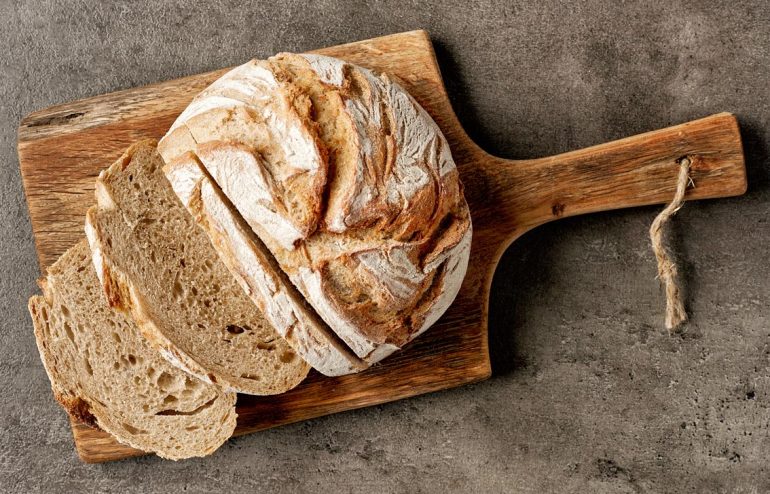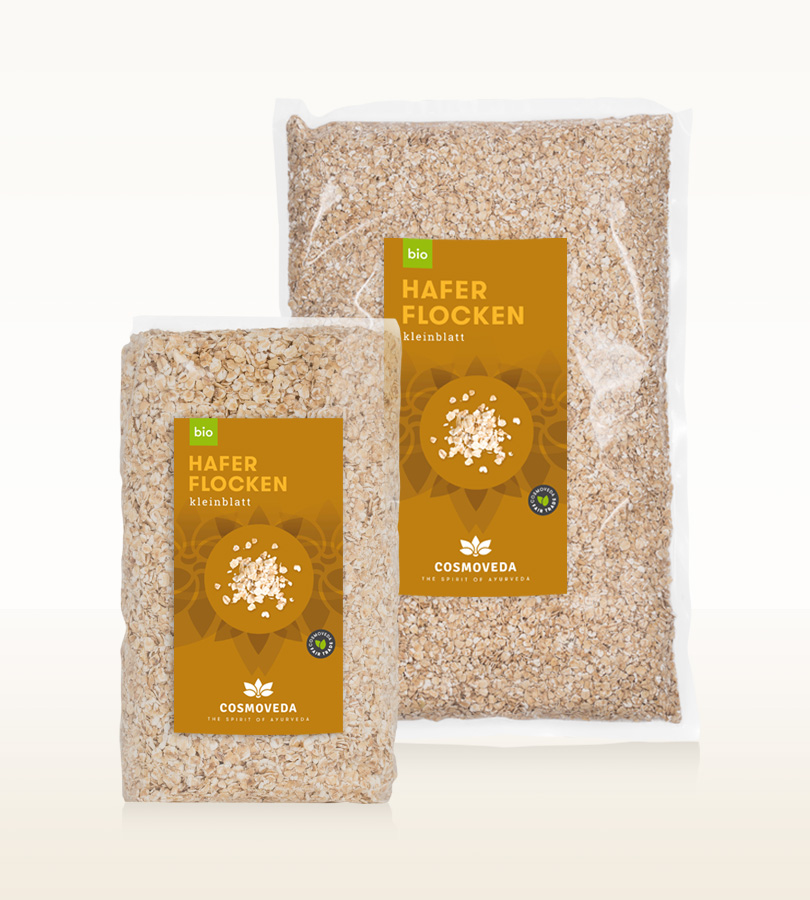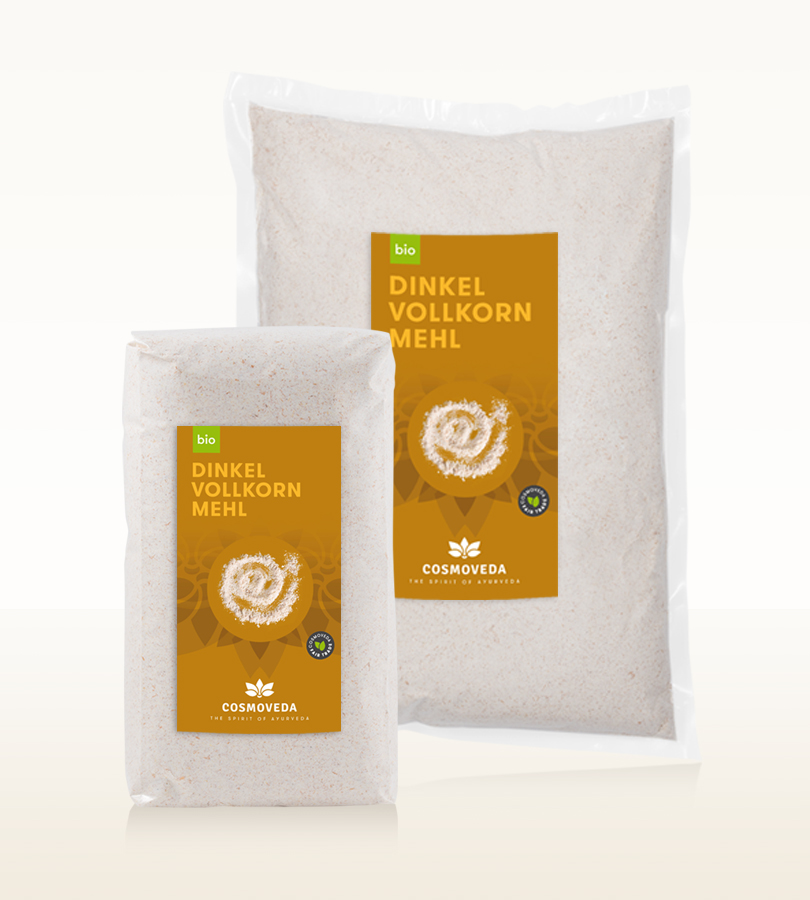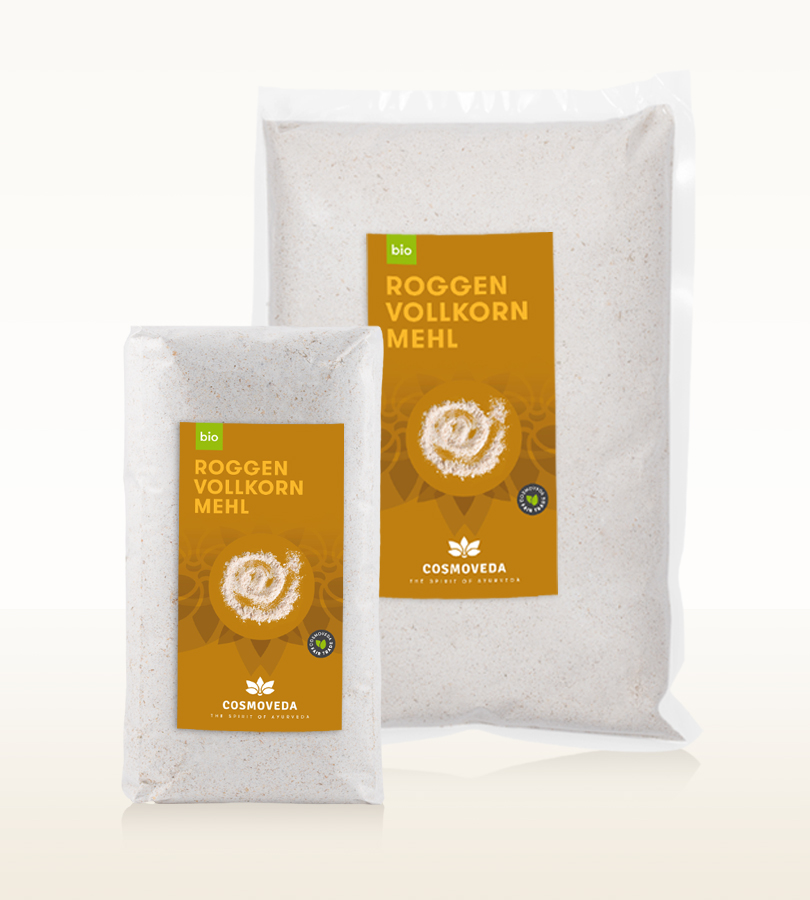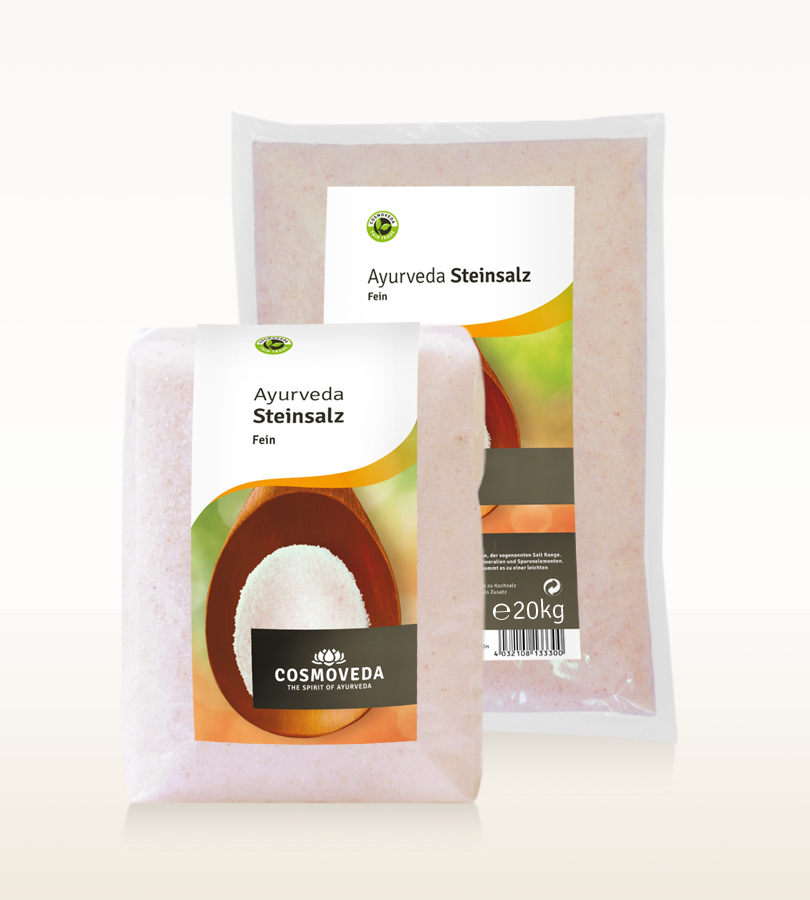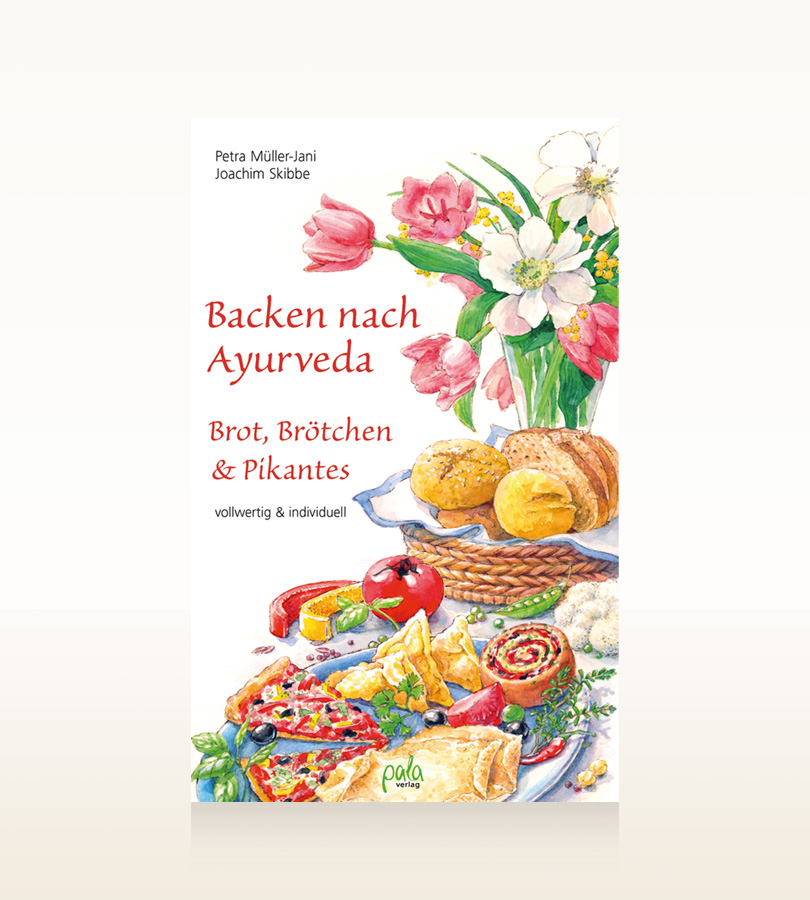Three grain bread
This is very rich bread. It is made not only of spelt, the favorite grain of St. Hildegard von Bingen, and rye, a bread grain par excellence, but especially the oats and other ingredients.
Oats not only have a high protein content (up to 20%), but protein with high nutritional value. Unsaturated fatty acids, particularly easily digestible carbohydrates, numerous minerals, vitamin E and B-spectrum vitamins make it unparalleled power storage – and pure natural medicine. Oats support functioning of pancreas and liver while lowering blood pressure and cholesterol levels. Not least, oats also help alleviate bad mood, have balancing effect and promote concentration and vitality.
It lacks only gluing properties needed for bread baking. That problem is solved by mixing other types of cereal, according to personal preferences.
Ingredients for a bread loaf tray
250 g ground oats
300 g ground spelt
350 g ground rye
1 – 2 tablespoons rock salt
400 – 420 ml lukewarm water
300 g natural sourdough
Something to grease baking tray
Sourdough: it begins with the approach
Sourdough consists of rye flour and water and is the oldest bread-making agent. It is especially suitable for baking rye or mixed grain breads. You can easily make natural sourdough yourself (see below) or purchase it at the health food store. Industrial ready sourdough is nowadays used in many bakeries (exceptions may be, for example, smaller farms or whole meal bakeries). Fully seasoned, the dough requires only 30 minutes instead of usual 15 hours sourdough.
To get started on sourdough breads, you need a sourdough substitute. There are three options for this. Finished batch can be stored in a glass jar in the refrigerator and be used (provided you bake bread every 8 to 10 days).
Sourdough with organic yeast
This basic recipe is ideal for beginners. Even sourdough breads without yeast are good for baking.
Mix in 5 – 10 g of organic yeast with 250 ml of lukewarm water and 150 g of finely ground rye flour. Cover with a damp cloth and leave to rest in a warm, draft-free place for 3 days. Occasionally stir the dough. Do not choose small container because the sourdough rises strongly at the beginning. Also, make sure that the sourdough does not dry out and is covered with a cloth if near the heater. Moisten the cloth time and again when it dries.
After 3 days fill the batch in a screw jar or use according to recipe. Stored in the refrigerator, it is stable for about a week. If you need new sourdough for your next loaf, just mix the rest of the mix with rye flour and lukewarm water. This time you can process the sourdough next day for baking.
Sourdough inserts without yeast
In a bowl, mix in 125 ml of lukewarm water with enough rye flour or meal (about 80 g) to make a creamy porridge. To intensify the sourness and attract desired yeasts and bacteria, add 1 tablespoon of butter or milk. Cover with a damp cloth and let it rest for 48 hours. Stir the mixture daily and keep the cloth moist (mixture mustn’t dry out). On the third day, the sourdough should release light bubbles and smell pleasantly sour. Then add another 125 ml of lukewarm water and about 80 g of rye flour. On the fourth day the sourdough is ready. Now you can use it for baking bread or store in a glass jar in the refrigerator.
Note: Sourdough likes warm (room temperature) and reacts, similarly to yeast dough, to drafts. Although it happens rarely, sometimes the leaven fails, i.e., dough does not blister and smells bad. Should this happen, best is to scrape everything and start over. Such dough does not crack while baking and you will only find a sticky solid inside the baked dough (especially if the bread recipe does not contain yeast).
Purchased sourdough insert
Purchased sourdough substitute is suitable if you are pressed for time. The readymade sourdough substitute is available at the bakery or the health food store either in the form of liquid sourdough or as instant sourdough. (However, homemade approach is cheaper.) Purchased sourdough can be immediately used for baking.
You will save money if you use part of mixture for next bread. To do this, use a bag of purchased liquid sourdough as a starter culture and simply mix with some rye flour and lukewarm water to a thick dough. Leave covered for one day or overnight. This way you have increased the amount of your sourdough and are free to use the desired amount for baking. Keep the unused sourdough in a glass jar in the refrigerator (up to 10 days) for the next loaf and multiply again the day before baking.
Preparation
1) Mix in ground grain with salt in a bowl and knead vigorously with lukewarm water and sourdough substitute. Additional water is dictated by the liquid content of the sourdough.
2) Leave the soft and slightly sticky dough under a damp cloth to prove for at least 4 hours, preferably for up to 12 hours in a warm, draft-free place. The volume of the dough should increase by half.
3) Bake in preheated oven at 200°C(E)/180°C(H) for 70-75 minutes (place bowl with water in the oven during first 30 minutes) and test if ready by knocking on it. If properly baked, bread should sound hollow. If you bake in a mold, take it out of the mold after 1 hour and bake for another 10 to 15 minutes.
4) Im vorgeheizten Ofen bei 200 °C (E) / 180 °C (H) 70 – 75 Minuten backen und den Klopftest machen. Während der ersten 30 Minuten Backzeit ein feuerfestes Schälchen mit Wasser in den Ofen stellen. Wenn Sie das Brot in einer Form backen, nach 1 Stunde aus der Form stürzen und weitere 10 – 15 Minuten ohne Form backen.
5) Place bread on a grill to cool.
Source: Petra Müller-Jani/Joachim Skibbe: Baking after Ayurveda – bread, rolls & piquant, Pala-Verlag

